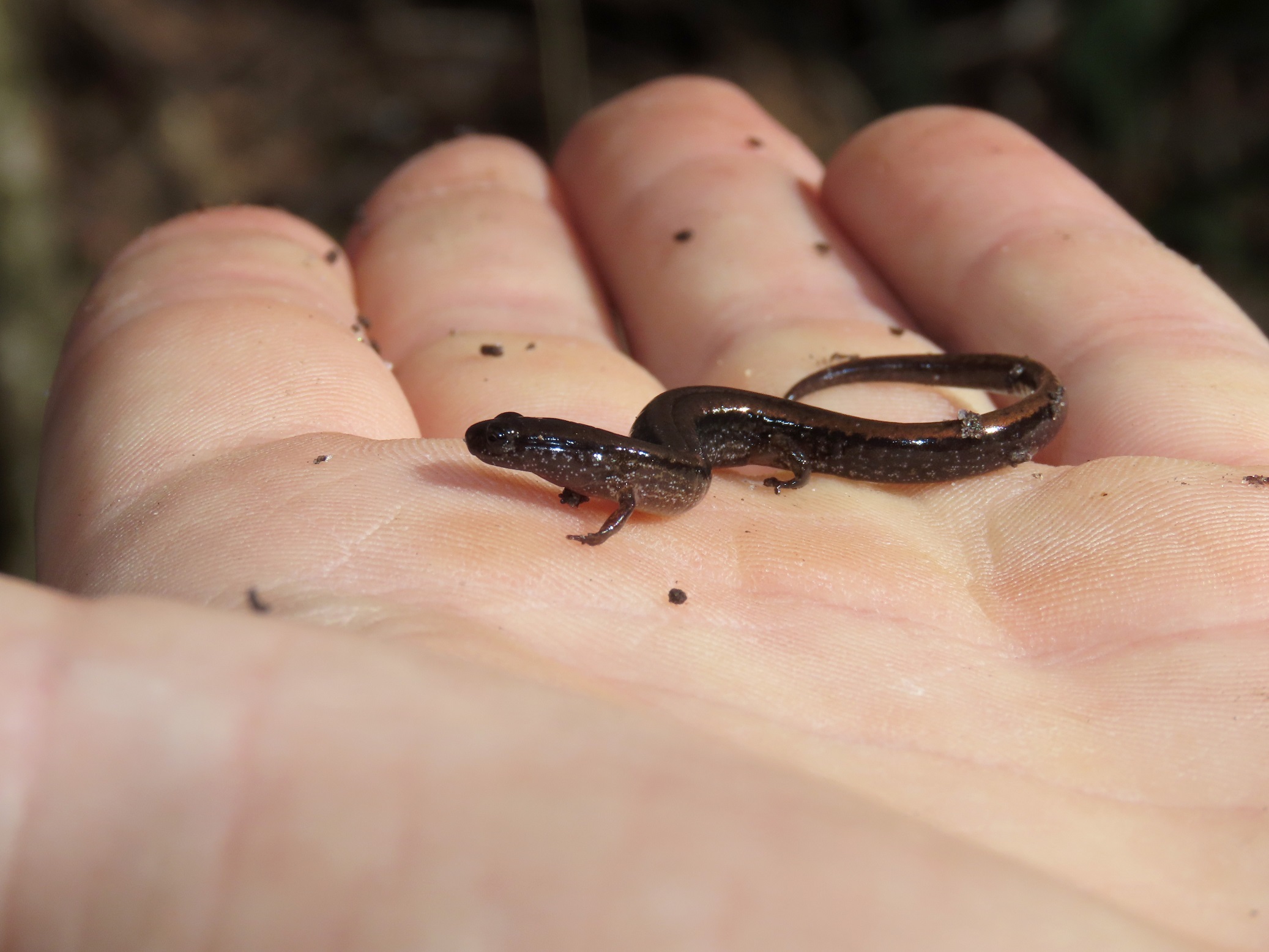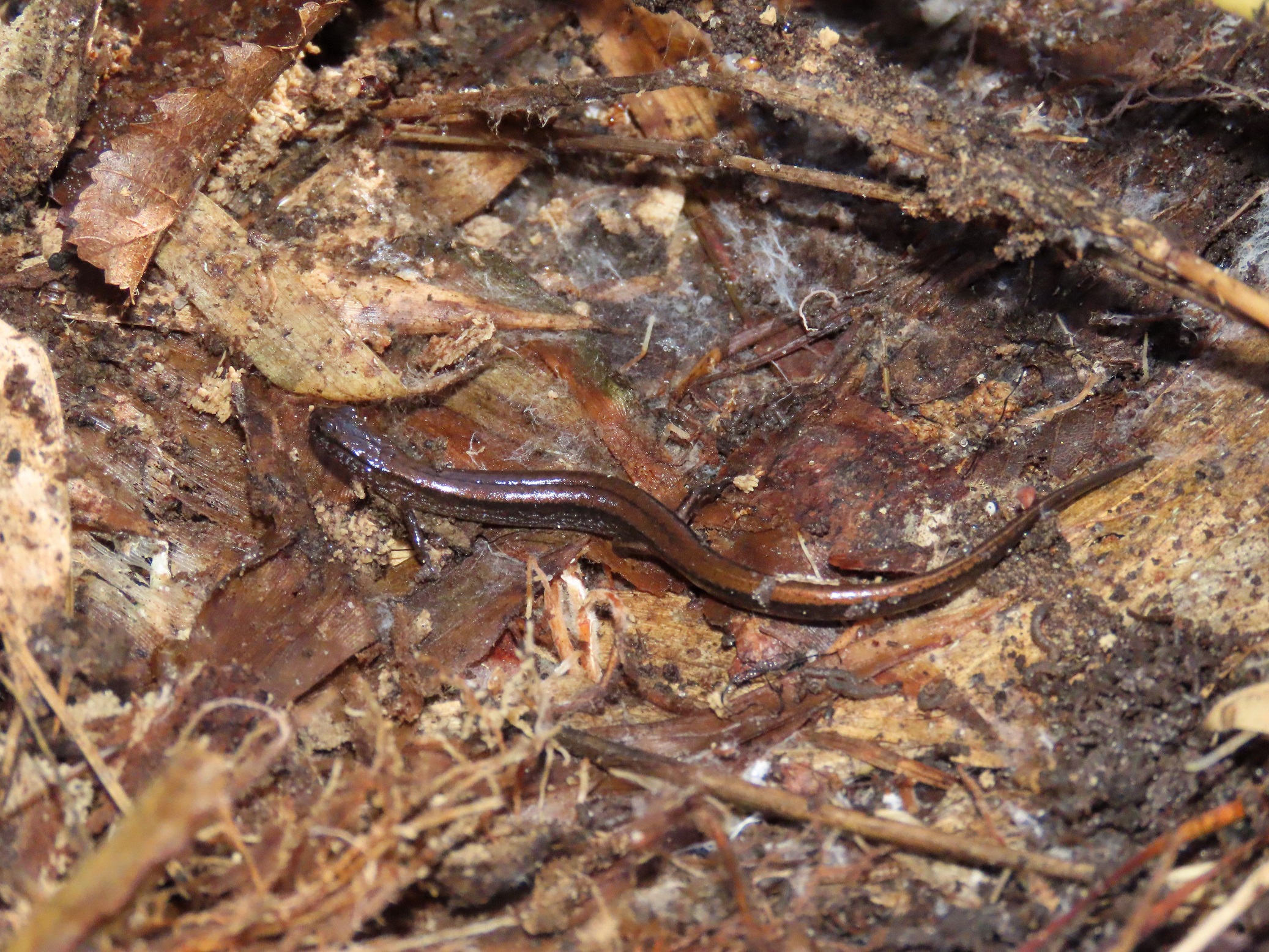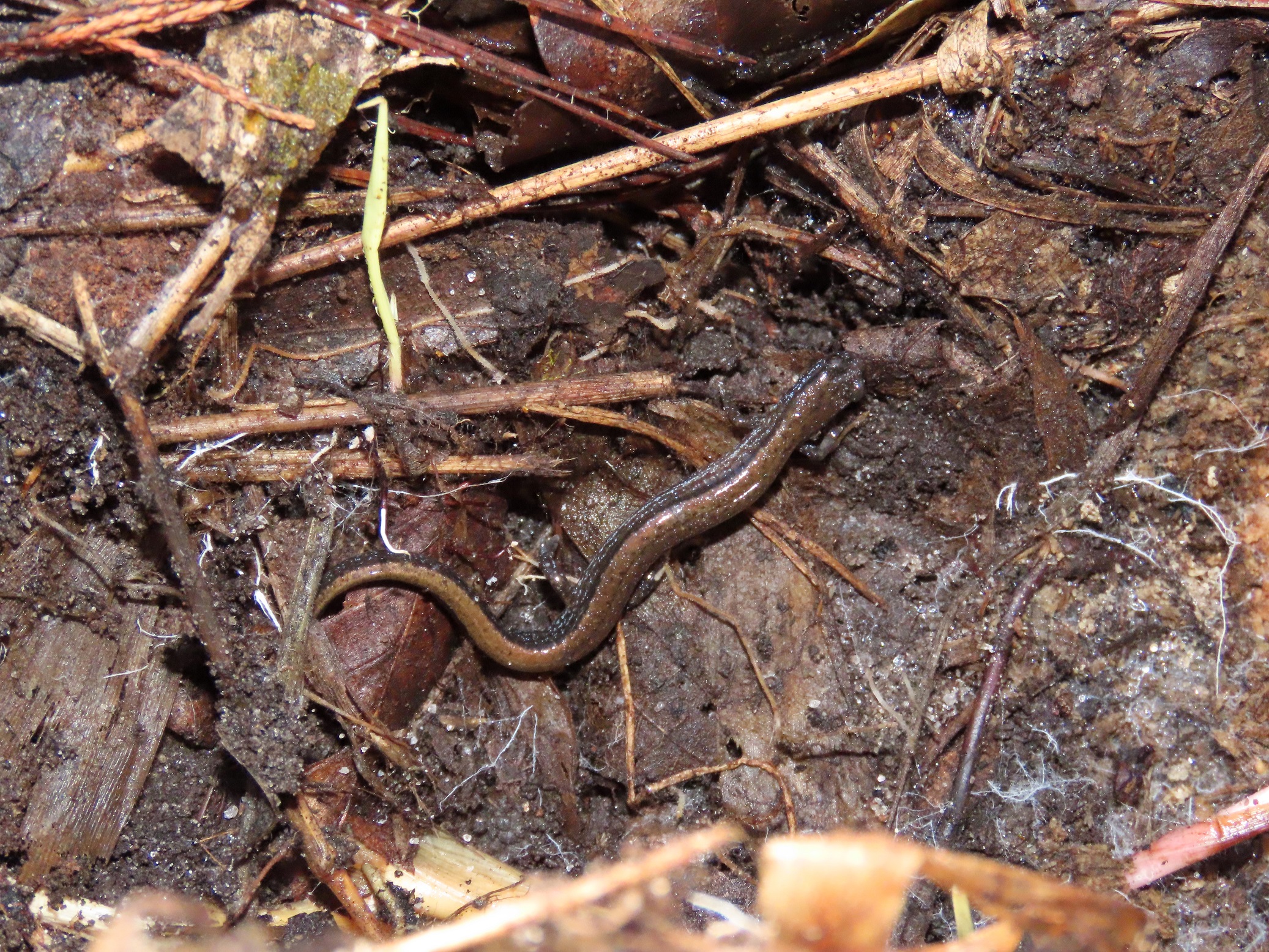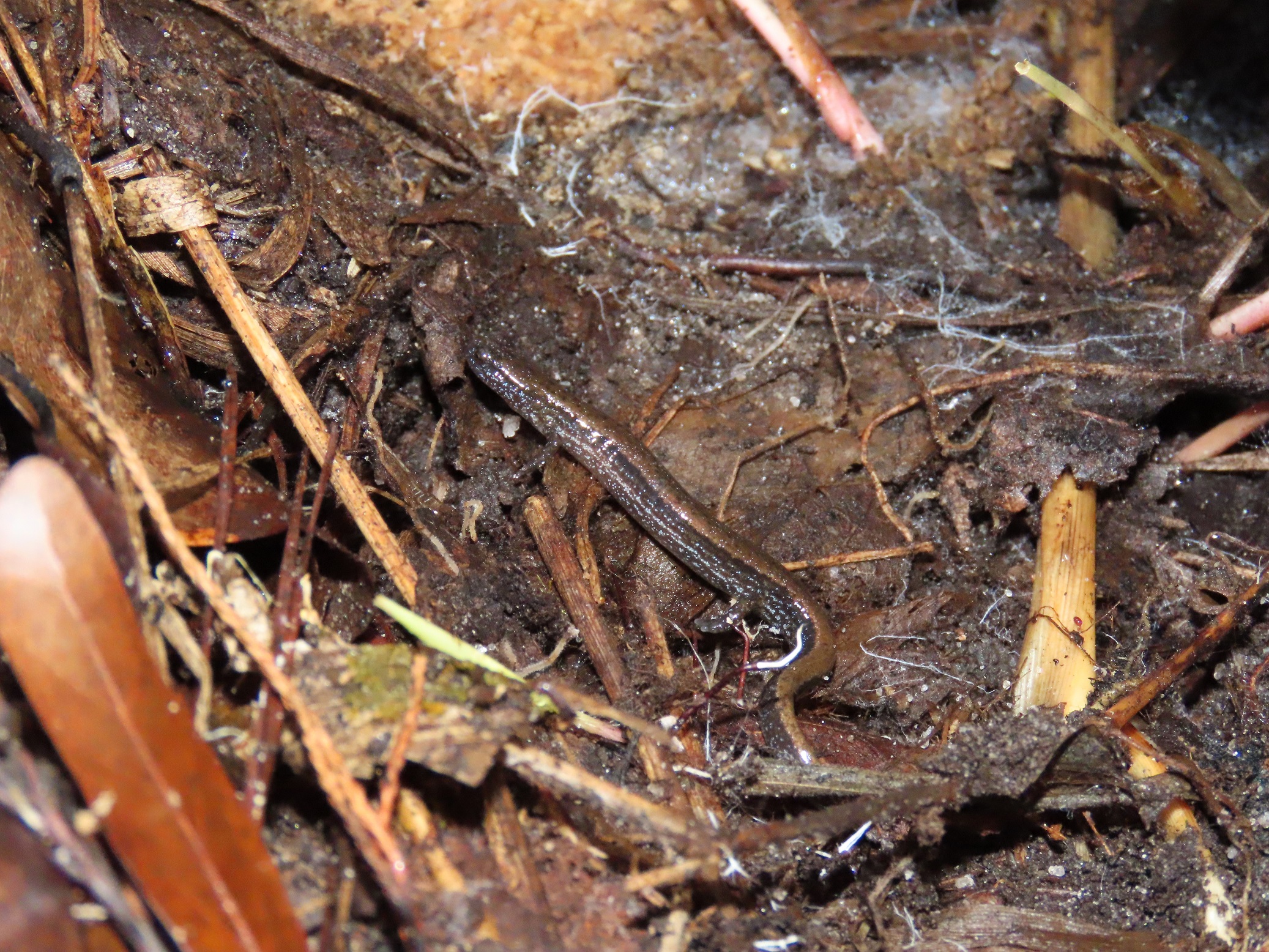



This week for Flora and Fauna Friday it’s our smallest salamander, the Coastal Plain Dwarf Salamander (Eurycea quadridigitata).
The Coastal Plain Dwarf Salamander is our smallest species of salamander here in the Lowcountry and one of our most abundant. They reside from the southern tip of North Carolina, throughout the Lowcountry of South Carolina, southern Georgia, and the panhandle of Florida. The Coastal Plain Dwarf Salamander has a sister species, the Chamberlain’s Dwarf Salamander (Eurycea chamberlaini), which was recently split off and is found in the midlands and foothills of South Carolina. The Dwarf Salamanders belong to the genus Eurycea, the Brook Salamanders, and are joined here in the Lowcountry by their congenerics, the Southern Two-lined Salamander (Eurycea cirrigera) and Three-lined Salamander (Eurycea guttolineata).
These four Brook Salamander species all share a common body plan, being small and skinny with short legs and a delicate head. The Dwarf Salamanders are best told apart by their small size, often only reaching two inches in length, and by only have four toes on their hind feet. Between the two Dwarf Salamander species, their diverging ranges are often sufficient for identification. But, in the hand, the Chamberlain’s Dwarf Salamander is often a straw-yellow in color. The Coastal Plain Dwarf Salamander by comparison is chestnut-brown along its back and flanked with sides of slate-gray peppered with flecks of quartz-white. Although a bit smaller, this Salamander’s shape and coloration are uncannily similar to our Ground Skink (Scincella lateralis), an abundant lizard in our Lowcountry forests.
The Coastal Plain Dwarf Salamander is found in a variety of shallow wetland habitats, from flatwoods and floodplains, to Carolina Bays, bluff seeps, coastal swale swamps, and even the margins of vegetated ponds and ditches. Here they spend their days worming through waterlogged leaf litter and squirming through Sphagnum capped seeps, hunting for miniscule invertebrates to devour. Like many of our salamanders and other amphibians, they lay eggs in the water, which hatch into, and spend the first several months of their life as, aquatic larvae before metamorphosing into more terrestrial adults. Dwarf Salamanders typically reproduce and lay eggs in winter, when water tables are highest in their wetland abodes.
I personally don’t associate salamanders with the Sea Islands. With our saltwater moats and three-hundred year history of intensive agriculture, which was followed swiftly by intensive coastal development on many islands, you wouldn’t expect for there to be much left in the way of salamander habitat. Especially for species sensitive to water pollution, temperature, and other environmental conditions, like the Brook Salamanders. And that is in fact the case. Yet, although few and far between, they’re still here! More terrestrial species, like the Marbled Salamander (Ambystoma opacum) and South Carolina Slimy Salamander (Plethodon variolatus), as well as fully aquatic species, like the Two-toed Amphiuma (Amphiuma means) and Sirens (Siren spp.), are more abundant and widespread. But in the untouchable backwaters and forgotten bogs, our delicate Dwarf Salamander still persists on Edisto Island.